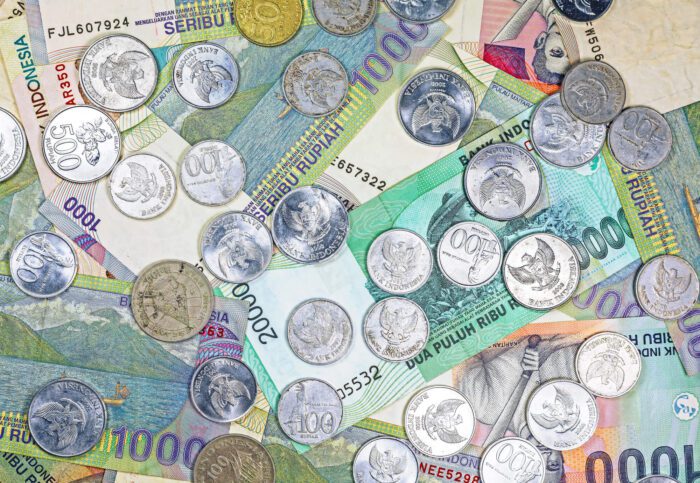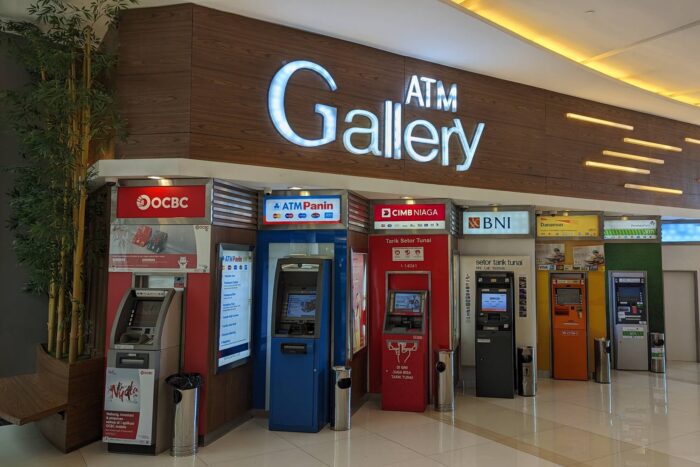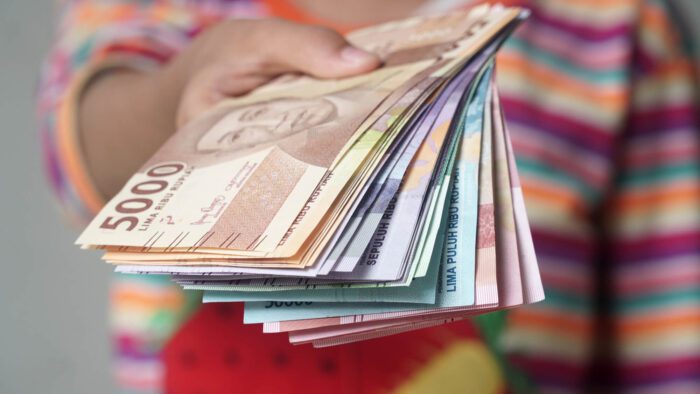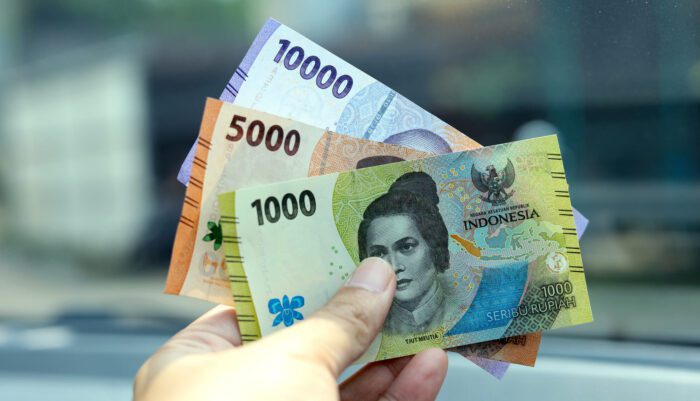What’s one of the first things that surprises travelers upon arriving in Indonesia? In no time, they find themselves becoming millionaires. But the initial excitement often gives way to confusion. Banknotes of various sizes, featuring portraits of local heroes, come in a rainbow of colors, and the large numbers can make your head spin.
This guide will walk you through everything you need to know about money in Indonesia, ensuring you can enjoy a hassle-free holiday. You’ll learn how to withdraw cash from ATMs, where and how to exchange money, whether using cards is advantageous, and much more.
Indonesian Currency (IDR)
The Indonesian currency, the rupiah (IDR), has significantly different values compared to what you might be accustomed to. The most common banknotes you’ll encounter are 50,000 IDR and 100,000 IDR – which may seem like large amounts at first glance, but when converted to dollars or euros, it’s much less. As of 2025, 1 USD is approximately 16,000 IDR.
Banknotes are available in denominations ranging from 1,000 IDR to 100,000 IDR. Coins are also used, with 500 IDR and 1,000 IDR being the most common. Smaller coins like 100 IDR and 200 IDR are rare and practically worthless.

To add to the complexity, new banknotes often feature different designs and slightly different color shades compared to older ones. So, relying solely on color to distinguish banknotes may not be wise. For example, the new 2,000 IDR note closely resembles the blue 50,000 IDR note.
Exchanging Money in Indonesia
While many travelers prefer withdrawing cash from ATMs, it’s always a good idea to carry some cash in USD, EUR, AUD, or NZD, which you can exchange at the start of your trip or when needed.
Where to Exchange Money
Upon arrival in Jakarta or Denpasar, you’ll be greeted by numerous exchange booths at the airports. However, as is often the case, airport exchange rates tend to be unfavorable, so it’s wise not to exchange your entire amount right away. Especially if your next destination is a tourist area, where you’ll find plenty of exchange offices and ATMs.
Arriving in Jakarta? Check out our guide How to Get from Jakarta Airport (CGK) to City Center.
In cities, stick to authorized exchange offices – you’ll recognize them by their security cameras, money counting machines, protective glass, and often, security guards. Be cautious of deals that seem too good to be true, as they often are. There are plenty of tricks designed to deceive travelers, so trust your instincts and don’t take unnecessary risks.
Getting the Best Exchange Rate
We recommend checking the reviews of your chosen exchange office on Google before heading there. A rating of 4.2 or higher usually means you can feel at ease. Many exchange offices also operate online – they can inform you of the current rate via WhatsApp.
WhatsApp is one of the mobile apps you will largely use in Indonesia. What are the others? Read our article 6 Apps to Install Before Travel to Indonesia.
Exchanging money at banks like Mandiri, BNI, or BRI is often not worth it, as their rates usually don’t compete with those at exchange offices. On the other hand, you can be sure you won’t encounter any tricks.
Beware of U.S. Dollars
If you’re exchanging U.S. dollars (USD), pay attention to the condition of your banknotes. USD often has double or triple exchange rates – the older or more worn the banknotes, the worse the rate you’ll receive. Even a simple crease can lower its value. Therefore, it’s better to keep your banknotes in an envelope to keep them flat. Smaller denominations, such as 1 USD or 5 USD, also tend to fetch a lower rate.
Backindo Tip: You’ll need a passport to exchange money, so don’t forget to bring it with you.
Withdrawing Cash from ATMs in Indonesia
ATMs are widespread in Indonesia, especially in larger cities and tourist areas. However, if you’re planning to visit the countryside or less-touristed islands, there might not be any ATMs available, or they might not be working. It’s always wise to carry some cash with you.
Using ATMs in Indonesia
Most ATMs in Indonesia accept Visa and Mastercard. Some also accept American Express, though this is less common.

ATM Fees
In Indonesia, you’ll find ATMs that don’t charge fees for foreign cards and those that do. The ATM will display information about any fees before you confirm the transaction, allowing you to decide whether to proceed. Your home bank might also charge a fee for international withdrawals.
Among the banks with the most favorable terms for tourists are:
- Bank Mandiri
- Bank Central Indonesia (BCA)
- Bank CIMB Niaga
- Bank Negara Indonesia (BNI)
Cash First, Then Your Card
Most ATMs in Indonesia dispense cash first and then return your card, which can be different from what you’re used to if ATMs in your country (like in Australia or New Zealand) return the card first. However, if you use the fast withdrawal option by selecting one of the preset amounts, the process is reversed: the machine will return your card first and then dispense the cash.
Be mindful of this difference, as it’s easy to forget your card if you’re expecting a different sequence. Indonesian ATMs take a few seconds to release the card, so be sure to wait for it.
Based on my own unpleasant experience when an ATM “ate” my card, I recommend removing the card as soon as it appears. I decided to put the cash in my wallet first and then deal with the card – but the ATM took it back before I could get to it.

ATM Withdrawal Limits
Withdrawal limits vary by bank, but they’re usually around 2,500,000 IDR per withdrawal (approximately 160 USD). Most ATMs allow two withdrawals per card, meaning you can withdraw up to 5 million IDR (320 USD) in total.
CIMB Bank is known for its higher limits, often allowing withdrawals of up to 3 million IDR per transaction.
Generally, you’ll only reach these maximum limits at ATMs that dispense 100,000 IDR banknotes. If an ATM only dispenses 50,000 IDR banknotes, the limit will be half (1,250,000 IDR). You can find information about what denominations the ATM dispenses on the machine itself.
In more remote areas or at ATMs of lesser-known banks, you might encounter even lower limits.
Safety Tips for Using ATMs
As mentioned earlier, only withdraw cash from ATMs in well-lit and secure locations, ideally inside a bank or shopping center. Recommended ATMs for foreign withdrawals are Mandiri, BNI, BRI, and CIMB. Avoid Commonwealth Bank ATMs, which are notorious for “eating” cards.
Backindo Tip: It’s smart to carry multiple payment cards when traveling, ideally a mix of Visa and Mastercard. This way, you can avoid complications if one card doesn’t work or if an ATM “eats” it.
Paying by Card and Cashless Transactions
Card payments are becoming more common in Indonesia, but you can’t always rely on them. Credit and debit cards are accepted in most hotels, restaurants, shops, and shopping centers, particularly in Bali, Yogyakarta, and Jakarta. However, in smaller establishments and rural areas, you’ll almost always need cash.
You’ll often encounter a 3% surcharge for card payments, which, although illegal, is commonly practiced. It also can happen that your foreign card will not be accepted. For this reason, it’s wise to always carry enough cash and not to depend on cashless payments. Exceptions are in some tourist hotspots in Bali, like Canggu or Kuta, where cashless payments are more widely accepted.
Backindo Tip: Always carry change with you. They come in handy for paying for public toilets (2,000 IDR), parking, or street food. Small vendors often don’t have enough change, so having the right amount can save you trouble.

Final Recommendations
Now that you’re well-versed in handling money in Indonesia, the last question is: How do you get rupiah in the most cost-effective and safest way? The best strategy is to exchange a small amount at the airport to get you comfortably into the city, then rely on ATMs for the rest. The staff at your accommodation can also direct you to the nearest ATM.
Don’t forget about safety. Bring at least two, ideally three, payment cards from different accounts. Withdraw funds from an account where you don’t keep all your savings, and never carry all your cards and cash in one place. Distribute them between your luggage to reduce the risk of loss or theft.
